The signs on the A690 welcoming visitors to Houghton-le-Spring feature a wild boar against an oak tree. The wild boar is taken from the Gilpin’s family coat of arms, associated with the town since the mid 16th century. This modern building is the former ‘Buffalos Club’ which stands on a site occupied for many years by butcher’s shops. The area was transformed after the dual carriageway was built in c1970.
A plaque documenting the history of The Wild Boar.
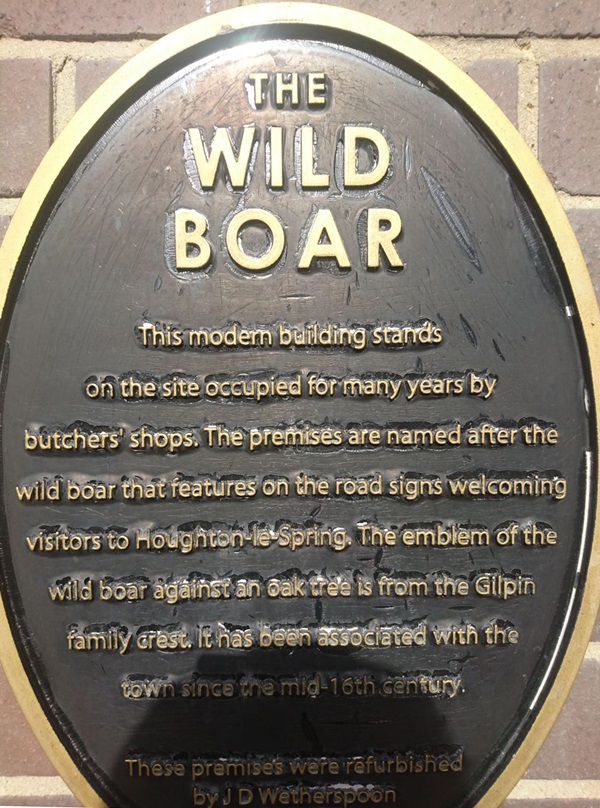
The text reads: This modern building stands on the site occupied for many years by butchers’ shops. The premises are named after the wild boar that features on the road signs welcoming visitors to Houghton-le-Spring. The emblem of the wild boar against an oak tree is from the Gilpin family crest. It has been associated with the town since the mid-16th century.
These premises were refurbished by J D Wetherspoon in 2011.
Photographs and text about the Houghton Cut.
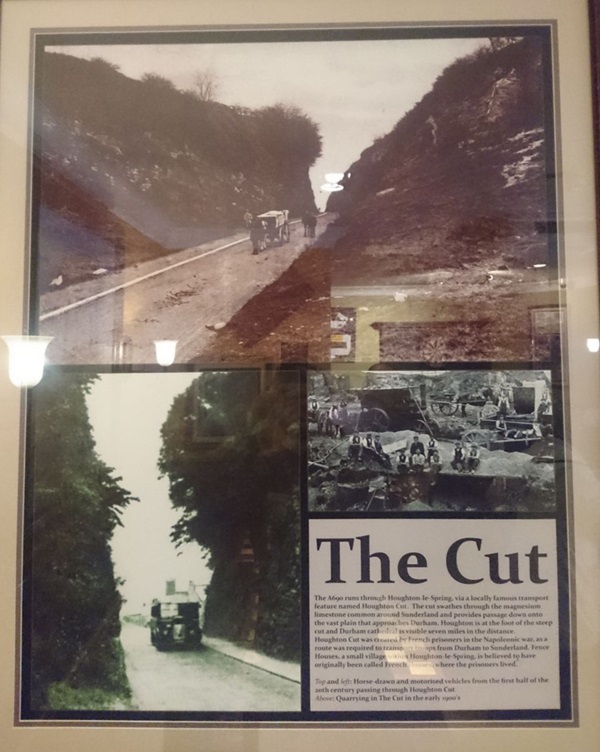
The text reads: The A690 runs through Houghton-le-Spring, via a locally famous transport feature named Houghton Cut. The cut swatches through the magnesium limestone common around Sunderland and provides passage down onto the vast plain that approaches Durham. Houghton is at the foot of the steep cut and Durham cathedral is visible seven miles in the distance. Houghton Cut was created by French prisoners in the Napoleonic War, as a route was required to transport troops from Durham to Sunderland. Fence Houses, a small village within Houghton-le-Spring, is believed to have originally been called French Houses, where the prisoners lived.
Top and left: Horse-drawn and motorised vehicles from the first half of the 20th century passing through Houghton Cut
Above: Quarrying in The Cut in the early 1900s.
A print and text about Bernard Gilpin.
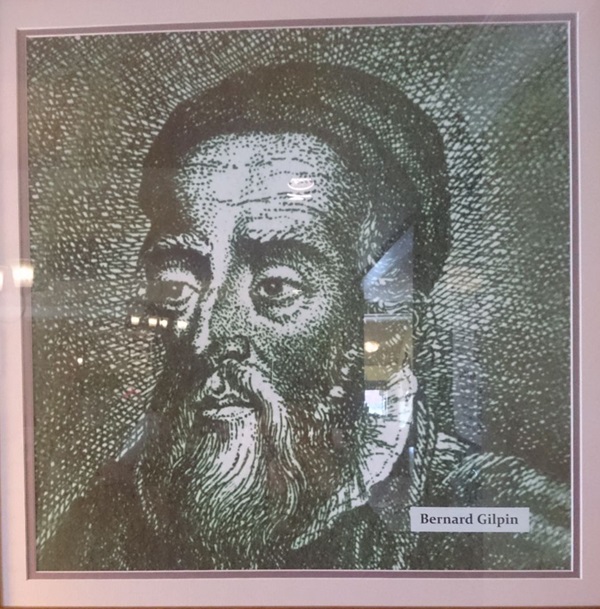
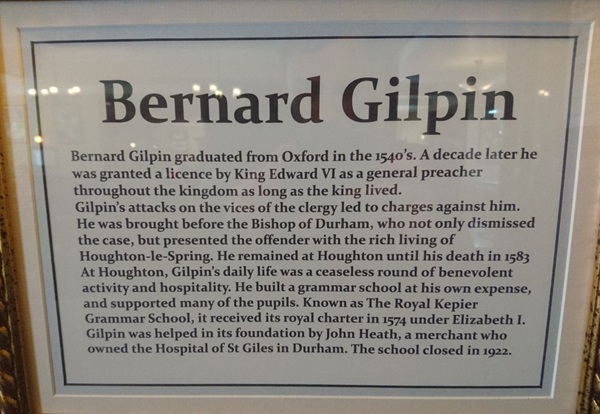
The text reads: Bernard Gilpin graduated from Oxford in the 1540s. A decade later he was granted a licence by King Edward VI as a general preacher throughout the kingdom as long as the king lived. Gilpin’s attacks on the vices of the clergy led to charges against him. He was brought before the Bishop of Durham, who not only dismissed the case, but presented the offender with the rich living of Houghton-le-Spring. He remained at Houghton until his death in 1583. At Houghton, Gilpin’s daily life was a ceaseless round of benevolent activity and hospitality. He built a grammar school at his own expense, and supported many of the pupils. Known as The Royal Kepier Grammar School, it received its royal charter in 1574 under Elizabeth I. Gilpin was helped in its foundation by John Heath, a merchant who owned the hospital of St Giles in Durham. The school closed in 1922.
A photograph of the White Lion and the lower end of Sunderland Street, c1895.
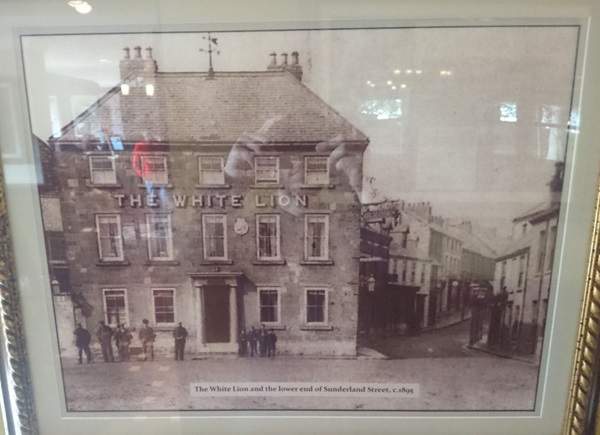
A photograph of Houghton miners during ‘Bait Time’ c1912 (the Salvation Army man is Joseph Davison White, also a miner).

Photographs of looking up Sunderland Street in the early 20th century.
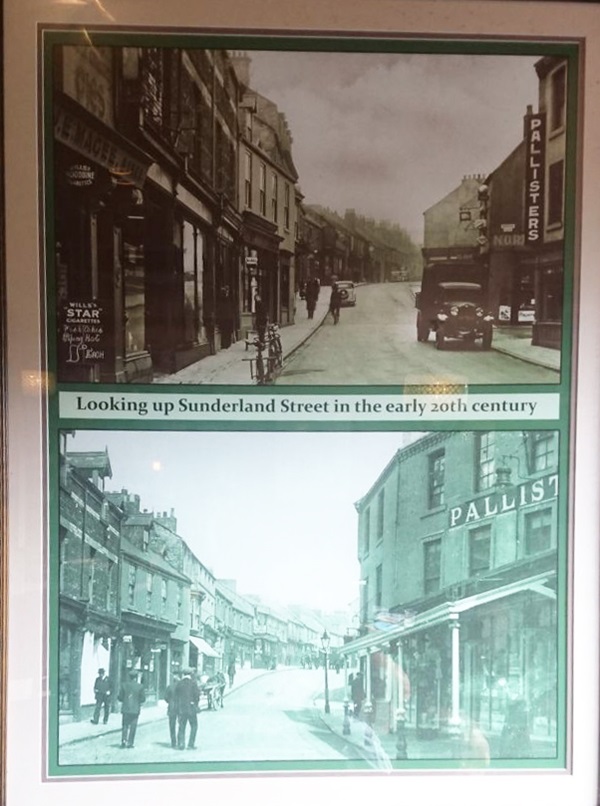
Photographs and text about Sunderland Street and The Lake.

The text reads: Frederick Place is the location of Wetherspoons’ Wild Boar. It was once the entrance to the area of Houghton-le-Spring known as The Lake. This wasn’t a lake created by the forces of nature, but by Joseph Coulston.
In 1881 Coulston diverted the Houghton Burn, or stream, to create a boating lake. Mill owners further down the stream objected to Coulston’s initiative and the lake was soon filled in. However, the area kept its name and was used as a showground during the long held festival of the Houghton Feast.
Top left: Houghton Boating Lake in 1881
Top right: The Lake after it had been abandoned
Above: Looking down Sunderland Street, c1915
Right: Sunderland Street, 1911
An acrylic painting entitled The Seven Sisters, by Susan Walton.
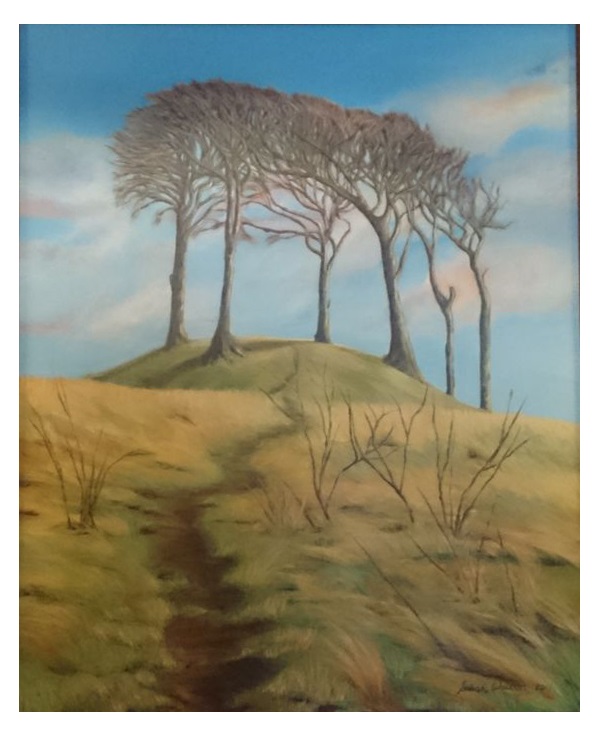
The text reads: Susan studied art at Farnham and Newcastle, gaining an Honours Degree in Fine Art Printmaking. She lives locally and started painting with watercolour a few years ago before discovering acrylics. “I find this a more flexible medium to paint with. The subject matter of my work is very mixed, but I have been influenced by a number of impressionist painters.
Copt Hill Barrow is a local prehistoric land mark. Excavations have found remains dating back 7000 years. The mound is known locally as The Seven Sisters due to the trees standing on top of it (even though there are now only six trees). It is listed with English Heritage as a scheduled ancient monument. I have tried in this painting to capture the powerful spirit of place emanates from this ancient structure”.
An acrylic painting entitled The Feast, by Nikki Jones.
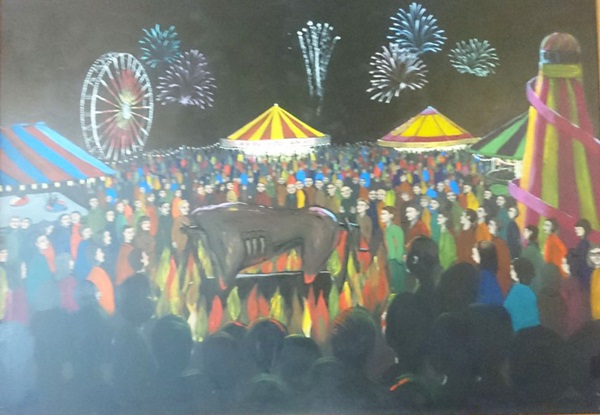
The text reads: Commissioned by J D Wetherspoon for The Wild Boar, Houghton-le-Spring, 2011. Nikki Jones, is a locally based artist with a background in Theatre Set Design, and a passion for Scenic Art. She is the founder of North East Murals.
Nikki’s work is created for her clients, who come from both the corporate and private sector, according to their unique requirements.
The Feast is based on The Houghton Feast, a legacy of Houghton-le-Spring’s rector and the Apostle of the North, Bernard Gilpin, whose coat of arms featured the Wild Boar after which this Wetherspoon free house is named.
External photograph of the building – main entrance.
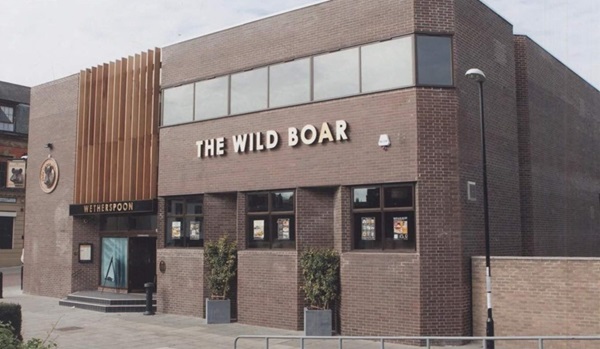
If you have information on the history of this pub, then we’d like you to share it with us. Please e-mail all information to: pubhistories@jdwetherspoon.co.uk